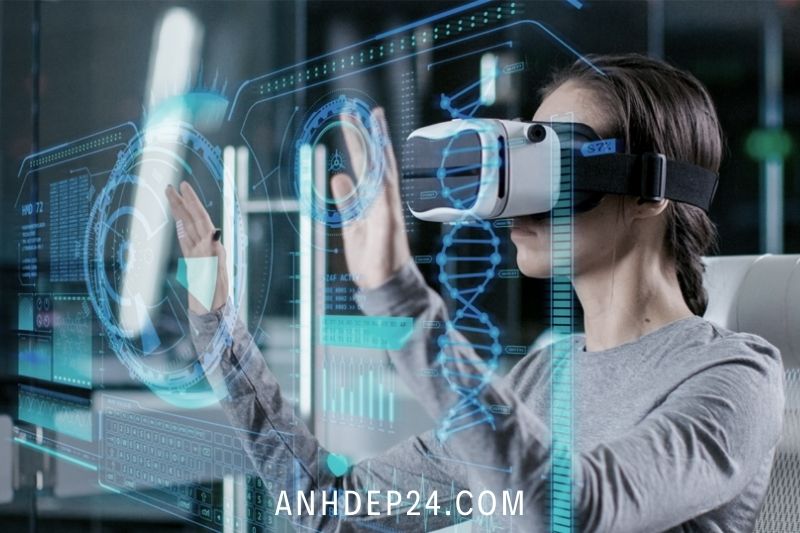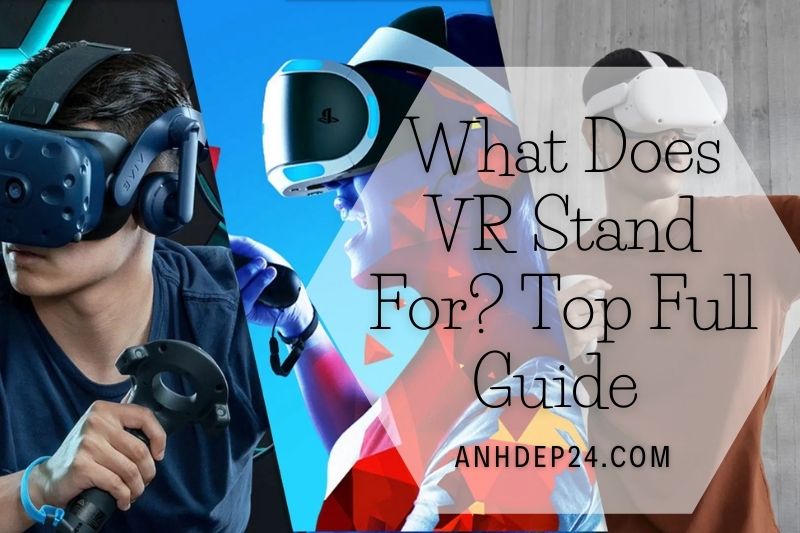What does VR stand for exactly? Virtual reality, or VR, is a technology that allows users to experience computer-generated environments. These environments can be completely simulated, or they can be based on real-world locations.
VR allows users to interact with these environments and navigate them using special devices, such as head-mounted displays or gloves.
Virtual reality

Virtual reality (VR) is an immersive, electronically-simulated environment that people can physically interact with. Virtual reality is often used in educational programs and video games.
VR headsets are used by gamers, as well as others, to enter the world. The headset displays a virtual world, and the other gear lets you interact with it.
This allows users to physically interact with the virtual world that they see through their VR headsets. A virtual battle might be held between two gamers, where each player swings a VR sword. Or a virtual rescue might be performed by a firefighter.
Some VR gear can be specific that the user can feel and hear the virtual world. A VR world can be enhanced by speakers and earbuds, and physical feedback via haptic technology.
What’s The Difference Between Virtual Reality And Augmented Reality?
Augmented Reality and Virtual Reality are two sides to the same coin. Augmented Reality could be described as VR with one foot in reality: Augmented Reality simulates artificial objects within the real world; Virtual Reality creates an artificial setting to live in.
Augmented Reality uses algorithms and sensors to determine the orientation and position of the camera. AR technology renders 3D graphics from the viewpoint of a camera. This superimposes the computer-generated images on a user’s view.
Virtual Reality uses the same sensors and math as in real life. Virtual reality uses the user’s position within the environment instead of locating a camera in a physical environment to locate it. The graphics will react to the user’s head if they turn. Instead of composing virtual objects and real scenes, VR technology creates an interactive, convincing world for the user.
Virtual Reality Technology

Virtual Reality’s most immediately-recognizable component is the head-mounted display (HMD). Display technology is often the biggest difference between immersive Virtual Reality systems, traditional user interfaces, and human beings.
CAVE virtual environments, for instance, display virtual content on large screens. They are great fun for researchers and large labs, but they are not suitable for industrial and consumer wearables.
The future of wearables is still in flux, as many new hardware and software options are available. Oculus Quest, HTC Vive Pro Eye, and Playstation VR are the leaders in this field, but other players such as Google, Apple, Samsung, and Lenovo could surprise the industry with their new levels of immersion.
HMDs are the center of Virtual Reality technology.
Virtual Reality And The Importance Of Audio
It takes more than graphics to convince people that Virtual Reality apps are possible. Both hearing and vision influence the sense of space. Humans respond more to audio than visual cues. To create immersive Virtual Reality experiences that are truly immersive, you need to know the exact spatial characteristics and environmental sounds.
These add a strong sense of presence to virtual worlds. This audio infographic by The Verge explains how to experience Virtual Reality’s binaural audio details.
Although audio-visual information can be replicated most effectively in Virtual Reality, research and development efforts focus on the other senses. Tactile inputs, such as omnidirectional treadmills, allow users to feel like they are walking through a simulation rather than sitting on a chair or a couch.
The technology of haptic, also called kinesthetically, or touch feedback tech, has advanced from simple spinning-weight “rumble motors” to futuristic ultrasound technology. You can now hear and feel real-life sensations with virtual reality.
How Virtual Reality Is Being Used Today
The video game industry is a significant proponent of Virtual Reality. Oculus Rift headset support has been integrated into Skyrim and Grand Theft Auto games, but Elite: Dangerous games have headset support built-in.
Many of the tried-and-true user interfaces used in gaming need to be adapted for VR. After all, who wants to select items from a menu that takes up their entire field of vision? However, the industry has quickly adapted as more hardware is made available for Virtual Reality gaming.
Virtual Reality And Data Visualization
Virtual Reality has been an excellent tool for engineering and scientific data visualization. However, there has been a lot of innovation in display technology that has led to an interest in everything from weather models to molecular visualization to architecture.
VR for Aviation, Medicine, and The Military
Virtual Reality training offers a viable alternative to live training in aviation, medicine, and the military. Virtual reality technology can create realistic cockpits for commercial pilots in training programs that combine live instruction and virtual flight.
Virtual tools and patients can be used to train surgeons. Studies have shown that this training results in faster doctors and fewer errors. Soldiers and police can conduct virtual raids without putting lives at stake.
Virtual Reality and The Treatment of Mental Illness
Virtual Reality technology can be used to support ongoing therapy programs for mental illnesses, such as post-traumatic stress disorder.
VR can allow veterans to face challenges in a controlled environment or overcome phobias using behavioral therapy. It has the potential to go beyond marketing, gaming, and industrial applications and help people understand, heal from, and reconcile real-world experiences.
Dr. Brian Jackson wrote this article. He is a former Senior Research Scientist at Marxent. He is a Ph.D. candidate in Computer Science specializing in computer vision.
Top relevant articles:
- PC Gaming Vs Console 2022: Top Full Comparison
- What Is Smurfing In Gaming 2022? Top Full Guide
- Is Intel Core i5 Good For Gaming? Best Answer Of 2022
- What Does CPU Stand For? Top Full Guide 2022
- GT 1030 Vs RX 550: Top Full Comparison 2022
FAQ
What does VR stand for in ASL?
Virtual reality (VR) is a way to experience the world completely without leaving it.
What does VR before a name mean?
It means “very respectfully,” but it isn’t respectful to use abbreviations like this. So it is a bad practice to copy.
What do VR and AR stand for?
Both virtual reality (VR) and augmented reality are exciting technologies that have great potential for the future of marketing, gaming, education, and e-commerce. Each technology is known for its enhanced experience, which combines virtual and real-world with enhanced 3-D visuals.
Is CGI an abbreviation?
Computer-generated imagery (CGI) uses computer graphics to create and contribute to images in art and printed media.
Conclusion
As we come to the end of this article, it is evident that there are many benefits to using VR. Whether it be for entertainment, training, or improving productivity, VR has something to offer everyone. We want to thank you for reading and hope that you will continue to explore VR’s possibilities.
